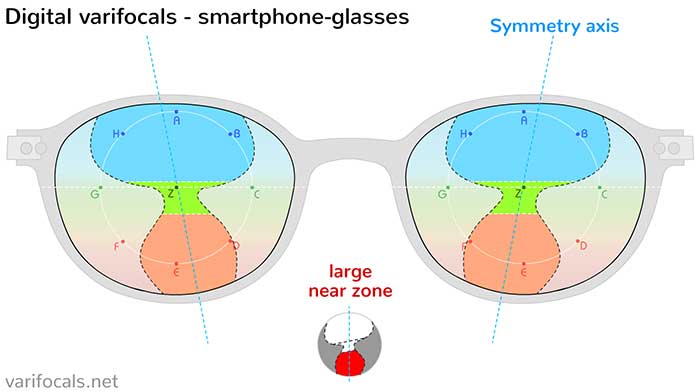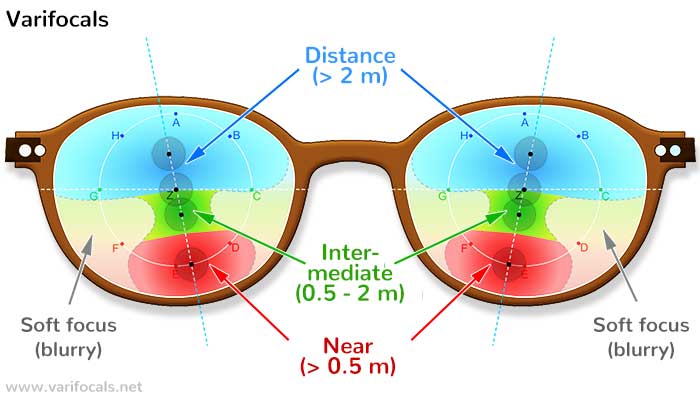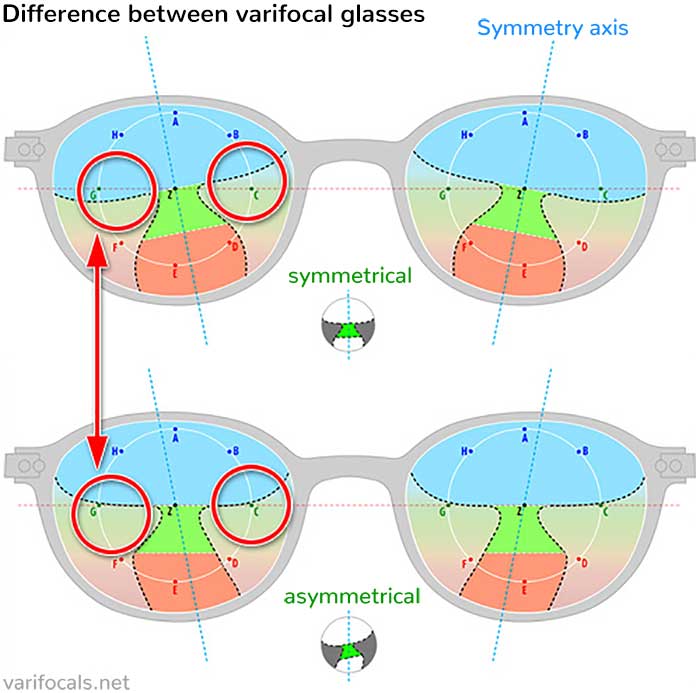Digital Varifocals - special progressive lens
A digital lens is a special progressive lens optimized for the use of digital displays. This includes monitors and screens of PCs, tablets, smartphones, or navigation devices. The term "digital lens" or "digital lenses" was coined by the eyeglass lens manufacturer Zeiss (headquartered in Jena). The goal is to minimize the "eye stress" caused by the continuous use of digital devices.

Specialty of "Digital Lenses"
The specialty of "digital lenses" is that they are optimized for individuals between 30 and 45 years of age who use digital devices intensively. It is, therefore, a kind of "progressive lens light" - one could also say: an "entry-level progressive lens."
Digital lenses can be practically fitted into any eyeglass frame. The choice of frame is, therefore, individual and unrestricted, just like with a regular progressive lens or single-vision lens.
How Much Do Digital Lenses Cost?
Progressive lenses are inherently significantly more expensive than single-vision lenses. Based on a professional eye examination, optimally customized lenses are produced. Therefore, one should expect costs of approximately $400 per lens.
For more information, see: Why are there such large price differences for progressive lenses?
Who Needs Digital Lenses?
Anyone who spends a lot of time working on a PC or frequently uses smartphones or tablets - and experiences tired eyes or occasional headaches - should consider getting digital lenses. As mentioned in my review, this can significantly relieve eye strain and improve overall well-being.
Characteristics of the Progressive Lens
A progressive lens is a type of multifocal glasses. The special feature lies in the unique lenses, which correct not only refractive visual impairments at one distance but multiple distances simultaneously. The "refractive visual impairments" include commonly occurring vision problems:
- Nearsightedness
- Farsightedness
- Presbyopia
- Astigmatism
A progressive lens becomes relevant when nearsightedness (often congenital) is accompanied by age-related presbyopia. In such cases, distance vision is not clear (due to nearsightedness), and near vision also becomes increasingly challenging (due to presbyopia). The progressive lens can correct both issues thanks to its unique lens design.

Top: Distance vision (over 2 meters);
Middle: Intermediate distances (0.5 to 2 meters), e.g., computer screen;
Bottom: Near vision (less than 0.5 meters), e.g., reading a book;
the lateral zones on the left and right are smoothly curved and often lead to a slightly blurry image
Lens design becomes better and better
The progressive lens manufacturers (e.g. Zeiss, Rodenstock, Essilor) are researching new "lens designs" that differ primarily in terms of the size / extent of the progression zone. As a result, different types of progressive lenses are now available on the market. Please click for more information:
- Simple standard varifocals (symmetrical axis, cheap)
- Varifocals with asymmetrical axis (better lens design)
- Panoramic varifocals for car driving
- Workspace varifocals - middle distance
- Digital varifocals for smartphones, tablets etc.

